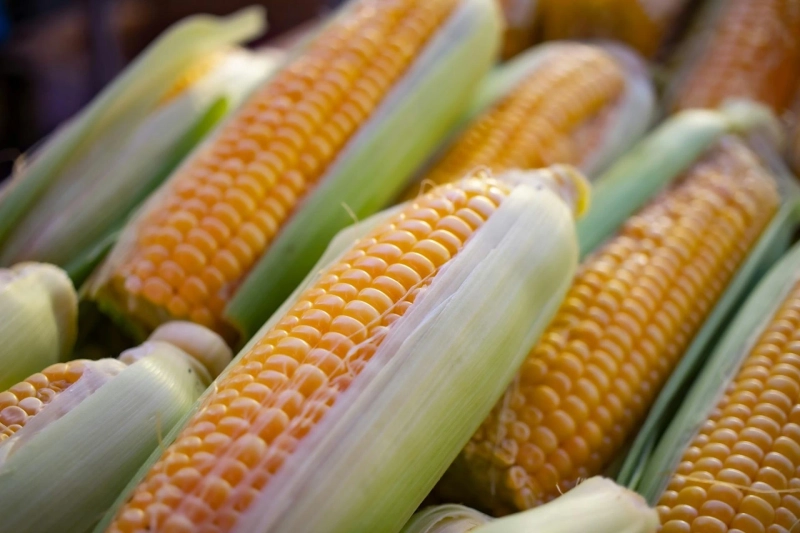Corn, a staple in diets worldwide, sparks curiosity and debate about its true classification. Is Corn a Vegetable, a grain, or something else? To unravel this mystery, we must examine corn from multiple perspectives: botanical, culinary, nutritional, historical, and legal. Each viewpoint provides insight into why corn defies simple categorization.
Botanical Classification
In the botanical realm, corn (Zea mays) is unequivocally classified as a grain. It belongs to the Poaceae family, which includes other cereal grains like wheat, rice, and barley. Botanically, a grain is defined as the seed of a grass plant. Corn kernels, the seeds of the corn plant, clearly fit this definition. This classification places corn firmly in the grain category from a scientific standpoint.
Agricultural Practices
Agriculturally, corn is grown primarily as a grain crop. The vast majority of corn cultivated globally is field corn, harvested when the kernels are dry. This type of corn is used to produce a wide array of products, including cornmeal, corn syrup, ethanol, and animal feed. The agricultural focus on corn as a grain underscores its primary role in the global food supply.
You can also read our other articles, https://almukhbir.com/
Culinary Classification
In the culinary world, corn's classification is more fluid. When corn is consumed fresh—such as sweet corn on the cob or fresh kernels—it's often treated as a vegetable. This usage aligns with other vegetables like peas and green beans, which are also seeds but consumed in their fresh state. Fresh corn's sweet taste and tender texture make it a popular addition to salads, salsas, and side dishes.
Conversely, when corn is dried and processed into products like cornmeal, cornstarch, or popcorn, it is treated as a grain. These dried forms are used similarly to other grains, such as wheat and rice, in various culinary applications, including baking and cooking.
Nutritional Perspective
Nutritionally, corn straddles the line between vegetable and grain. Fresh corn is rich in vitamins, minerals, and antioxidants, particularly carotenoids like lutein and zeaxanthin, which are beneficial for eye health. It also provides dietary fiber and some protein, akin to vegetables.
Dried corn products, on the other hand, are high in carbohydrates and starch, typical of grains. These products are energy-dense and serve as essential staples in many diets, providing a significant source of calories.
Historical and Cultural Context
Historically, corn has been a central food in the Americas, cultivated for thousands of years by Indigenous peoples. Corn, or maize, was a vital crop for civilizations such as the Aztecs, Mayans, and Incas, who relied on it for sustenance and cultural practices. European settlers adopted corn and it became integral to agricultural and culinary practices in the New World.
Legal Definitions
Legal classifications can also influence how corn is perceived. In the United States, the Department of Agriculture (USDA) classifies fresh corn as a vegetable for dietary guidelines purposes. However, when corn is dried and processed, it is categorized as a grain. This dual classification by the USDA reflects the practical uses and nutritional profiles of corn in its various forms.
Market and Consumer Perception
In grocery stores, fresh corn is typically found in the produce section, reinforcing its identity as a vegetable in the minds of consumers. Products made from dried corn, like cornmeal or cornflakes, are found in the grains or baking sections. This separation in the marketplace mirrors the dual nature of corn's classification.
Scientific Consensus
Scientific consensus acknowledges that corn's botanical classification as a grain is the most accurate. However, the context of its use—whether fresh or dried—affects its classification in culinary and nutritional contexts. This recognition highlights the complexity and versatility of corn.
Conclusion
Unpacking the mystery of corn's true classification reveals a multifaceted identity that cannot be confined to a single category. Botanically, corn is a grain, but its culinary and nutritional roles allow it to be treated as a vegetable when fresh. Historically and culturally, corn's significance transcends simple definitions, reflecting its vital role in human societies.
Understanding corn's diverse classifications enriches our appreciation for this remarkable crop. Whether enjoyed as a sweet summer vegetable or a hearty grain, corn remains an indispensable part of our diets and cultures, embodying versatility and adaptability. So, the next time you savor a buttery ear of corn or a bowl of popcorn, remember that its true classification is as dynamic and diverse as its uses.


